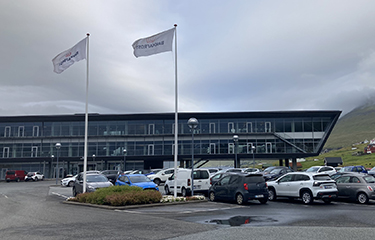Bakkafrost Group recently released unfavorable financial results for Q2 2023, and the salmon-farming firm expects production woes in Scotland to continue.
The Glyvrar, Faroe Islands-based Atlantic salmon-farming group posted total operating earnings before interest and taxes (EBIT) of DKK 353 million (USD 51.7 million, EUR 47.4 million) for the second quarter of 2023, down 40 percent from DKK 587 million (USD 85.9 million, EUR 78.8 million) in the corresponding period of 2022, which remains its all-time highest-grossing quarter.
Bakkafrost’s operating revenues fell 1 percent year over year to DKK 1.67 billion (USD 244.4 million, EUR 224.1 million) in Q2 2023, and it reported a loss of DKK 123 million (USD 18 million, EUR 16.5 million) for the three-month period, a stark change from the profit of DKK 845 million (USD 123.7 million, EUR 113.4 million) it posted in Q2 2022. Low harvest volumes and fish weights in the Faroes contributed to the downturn.
Bakkafrost harvested 16,001 metric tons (MT) of gutted-weight salmon in the quarter, down 3,746 MT, or 19 percent, year over year. Its Faroe Islands farming segment accounted for 8,658 MT of that production, a steep decline from the 13,101 MT recorded in Q2 2022. Bakkafrost’s Scottish farming segment harvested 7,343 MT, an increase from the 6,646 MT harvested in Q2 2022.
Bakkafrost CEO Regin Jacobsen said the company’s Faroese production was low in the quarter due to an early January harvest in one region and a lower average weight for its harvested fish, which dropped from an average 4.7 kilograms to 4.3 kilograms.
“This was an unfortunate development, and during the second half of the year, we expect to increase the harvest weights back to the level that they used to be,” he said.
Bakkafrost’s Scottish operations, which it acquired through the purchase of a majority stake in the Scottish Salmon Company in 2019, performed well in the first five months of this year, Jacobsen said, with increased harvest volumes and higher average weights of 4.6 kilograms that led to “significantly” better prices. However, toward the end of Q2, mortality levels increased …
Photo by Cliff White/SeafoodSource








